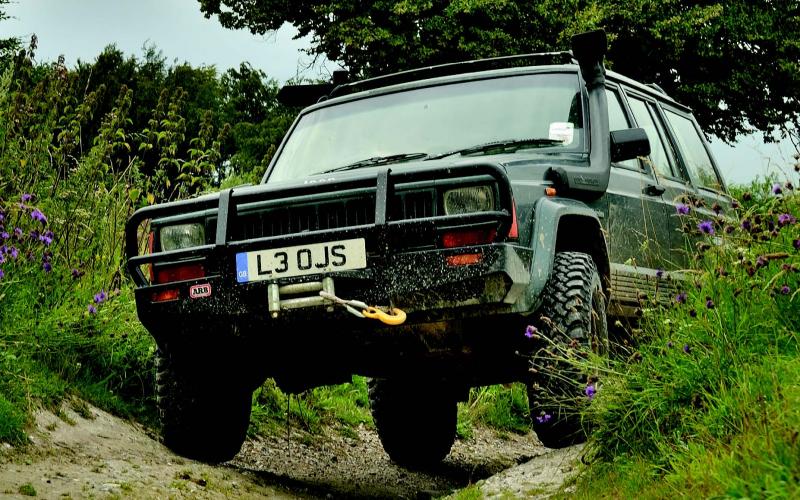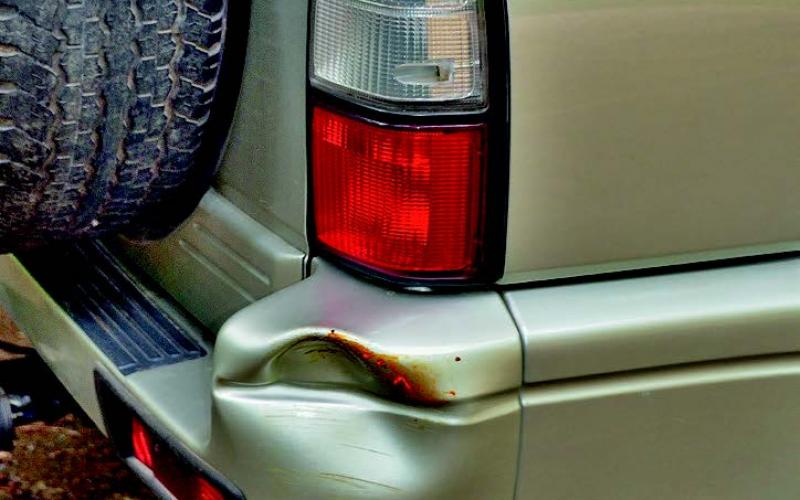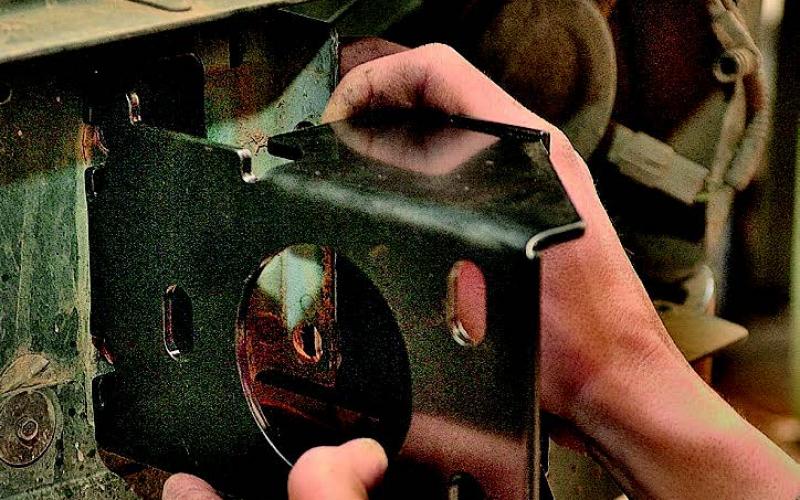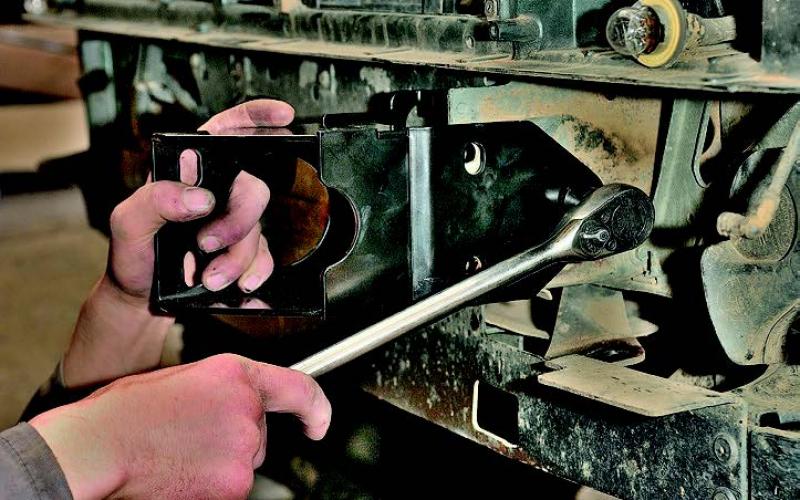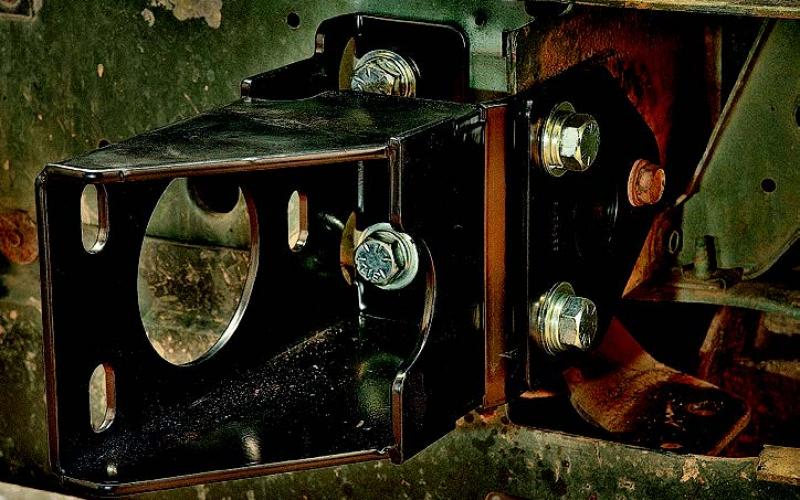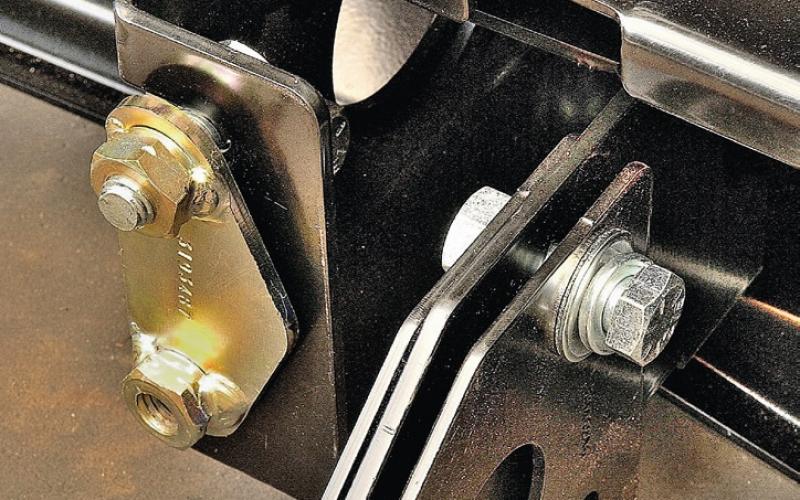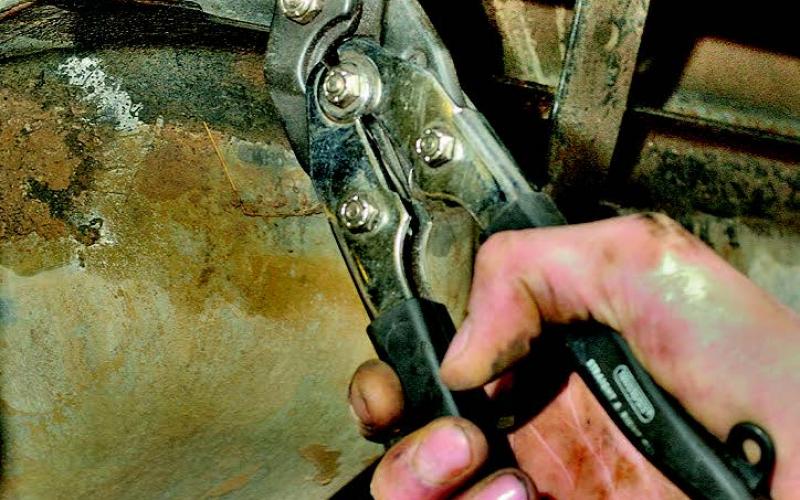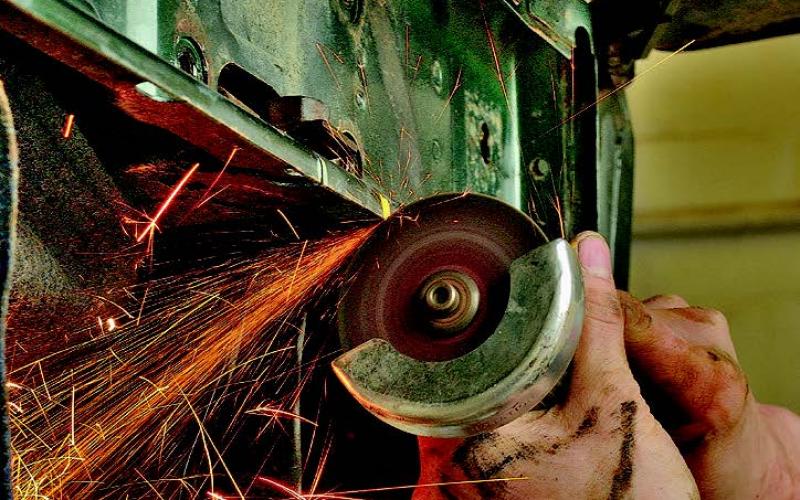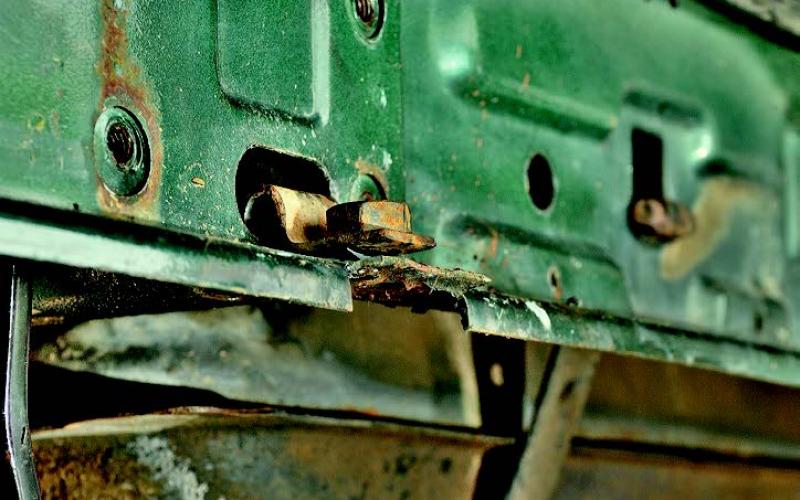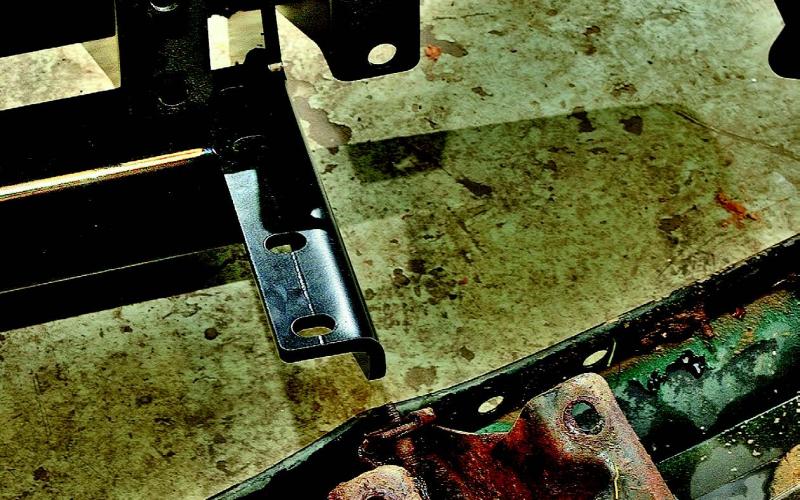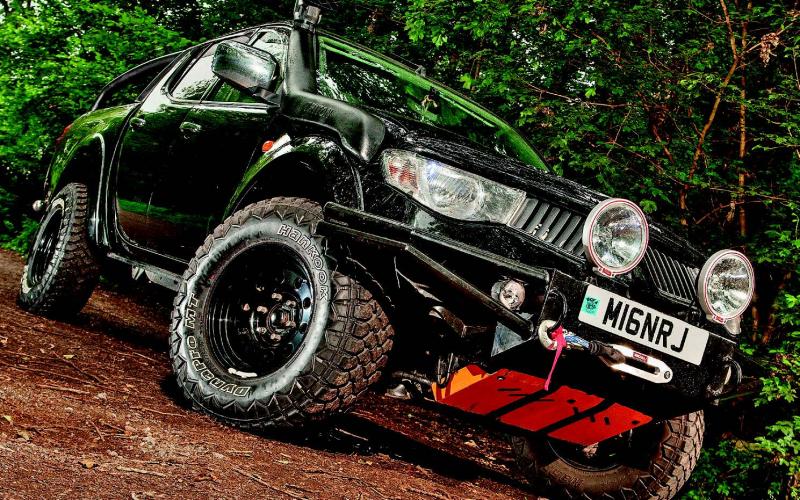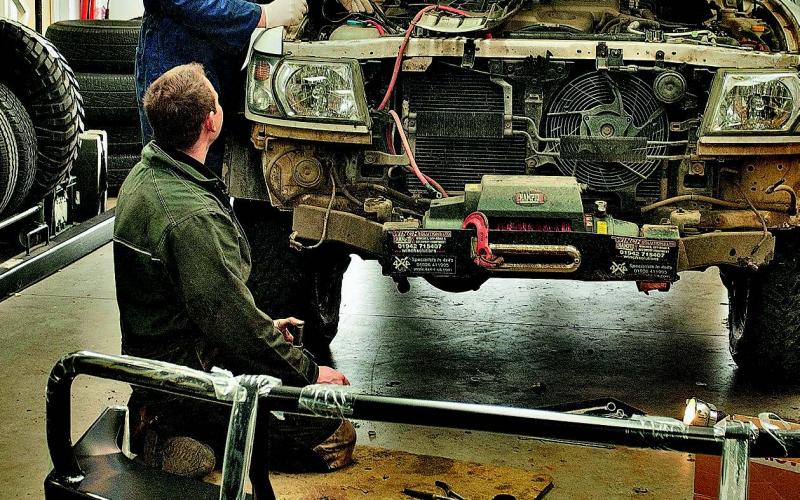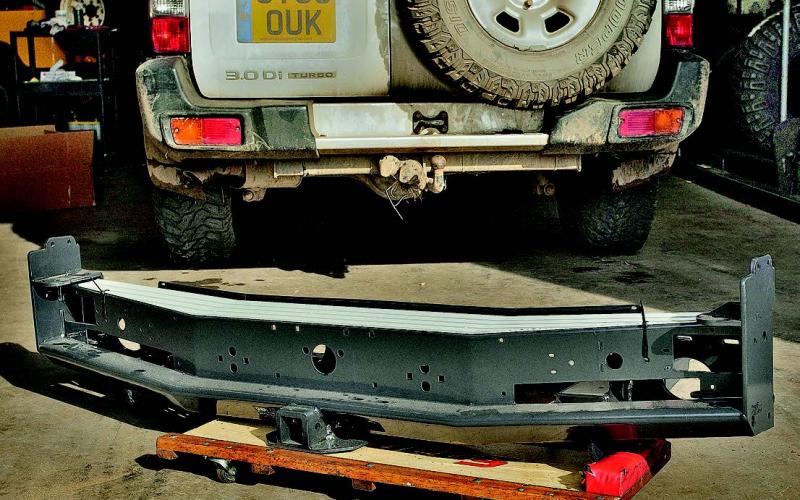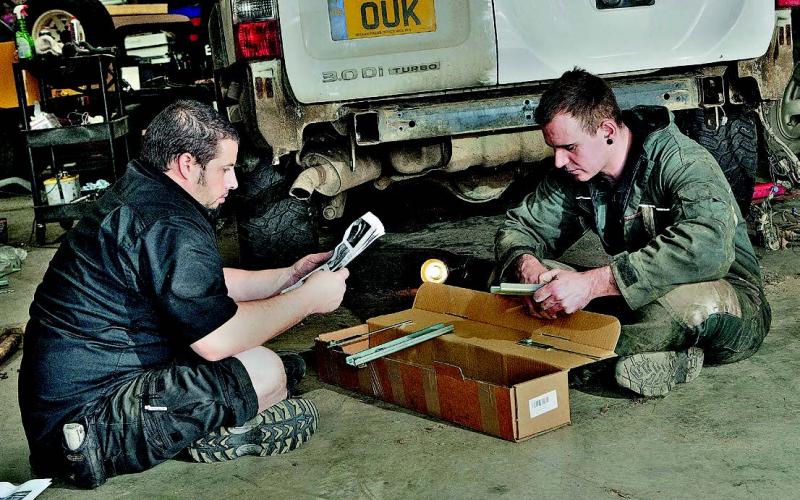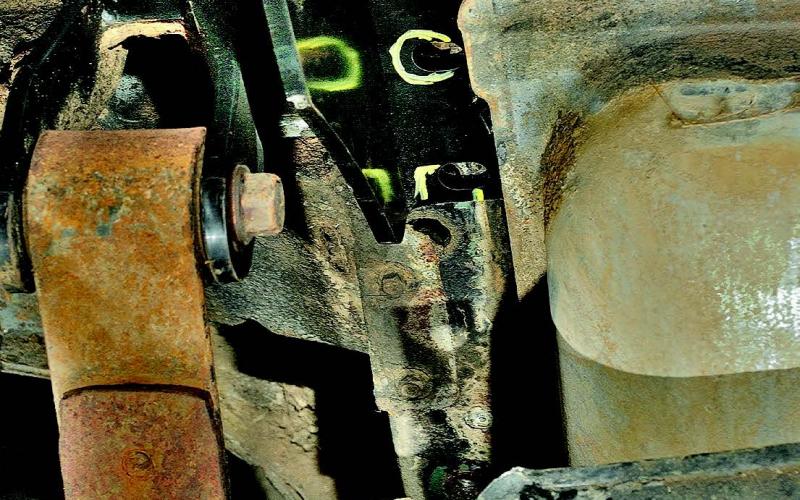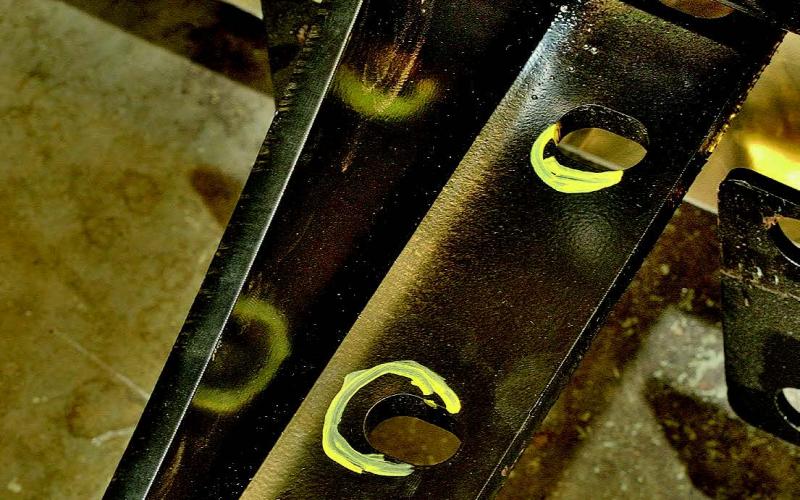WORKSHOP: Heavy-duty bumpers - are they better when built, bought or bespoked?
Few people who spec up an off-road vehicle do so without giving some consideration to the subject of protecting its front and rear ends. For a few, a heavy-duty bumper is just somewhere to put a winch – but to most, it’s integral to the business of keeping your truck’s bodywork intact.
This is an area in which a good many off-roaders are willing to give it a go themselves. Even those who wouldn’t, for example, trust themselves to change a clutch or strip a wiring loom are often happy to knock up a hefty bumper or two. It is, after all, just a straightforward grinding and welding job when all’s said and done.
That’s one reason why you sometimes see 4x4s wearing stupendously rough looking bumpers. More often than not, a home-brew will be a testament to its builder’s fabrication skills – but every so often it turns out as a damning indictment of his lack of them.
We can’t tell you if you’re up to the task of building a bumper. Well, we can a bit. Here’s a question: if it turns out to be rubbish, will you just go ahead and bolt it on to your vehicle anyway? If the answer’s yes, you’re not up to it.
Actually, here’s another question (we’re getting warmed up now): a bumper is only as good as its mounts, isn’t it? This time, if the answer’s no, you’re not fit to build one.
Of course, this doesn’t mean that if you build a couple of solid mounts and sling a bit of tinfoil between them, you’ve got a good bumper. But you get the point. When your bumper grounds out or gets caned into a tree (and it will), massive forces are put through it. The same goes for when you use it in a recovery, only more so. In each case, if it’s not bolted up to the vehicle it’ll just fall off. Take a look on YouTube if you think you’d be the first person this ever happened to.
So, this article isn’t going to be a step by step guide to building your own bumper (we’ve done those in the past, and no doubt will again). Instead, we’re going to try and help you choose between the various options that exist for getting some heavy metal on the front (and/or back) of your truck, and whether the more expensive options are worth the extra money.
Building your own
There are many attractions to building your own bumpers. One is that you end up with a design that’s exactly how you want it – if you pay someone else to do it, whether it’s off-the-shelf or a bespoke build, in the end there will always be compromises. The seller will only design it up to a certain level of quality, which is determined by the price he thinks he can get for it, so by keeping it in your own hands you get to make those decisions yourself.
As with everything, you might set out with great intentions and end up making some compromises of your own. But the most important thing is to recognise that if you’re going to do your own fabrication, first you need to have the basic skills – if you can’t weld for toffee, trying to fabricate something whose job will be to protect your life in a big stack might be considered a little cavalier.
Think about the cost of building your own, too. Obviously you don’t pay for your own time – though it’s time you could be spending on other things, so it still has a value. If you don’t see enough of your family and friends, locking yourself in the garage for several weekends in a row just to save what might only be a hundred quid or so is unlikely to make them feel any better about you.
Don’t forget that the raw materials you use to build your bumper have a cost, too. You have to buy the steel and pay to run the grinder and welder you use for working it, as well as whatever finish you put on and all the hardware you use for attaching it to your truck. That’s already a good bit, before your steel costs double when you realise you’ve cut it all up in the wrong size because you were looking at your plans upside-down.
Depending on the kind of vehicle you’re working on, then, building your own may turn out to be cost-effective – or a total waste of time and money. If you’ve got a Land Rover Defender, to quote the most obvious example, there’s no end of off-the-peg bumpers costing from less than the price of a night out.
There is, however, a very significant factor that goes beyond anything a dull cost-benefit analysis can achieve. As well as being able to get exactly what you want by designing and building your own bumpers, doing so can give you an enormous sense of achievement. It’s a very visible part of your vehicle, after all – if you’re going to get the ‘I did that’ buzz every time you see it, that’s reason enough on its own.
Of course, if you’re going to get more of an ‘oh God, I did THAT’ sort of feeling, that’s reason enough to let someone else take care of the work. You might still want to design it yourself, though, even if your fabricating skills aren’t up to the mark, in which case an excellent solution is to build a full mock-up in thin MDF. It’s dirt cheap and dead easy to work with (be warned, though, particularly if you’re using power tools, that MDF dust is extremely dangerous), so you should easily be able to create a set of templates which you can take to a fabricator. They’ll copy them in the gauge of steel you require; you can either weld the bits up yourself at this point, or pay them a bit more to finish the job altogether. This way, it might not be your handiwork but is sure is your design, and that counts for a lot.
Going bespoke
The next two options are fairly similar in some ways. Both involve small, independent companies producing hand-built items to demand.
This tends to appeal to a lot of off-roaders. Many of us are into this hobby because at one level or another it appeals to our desire to be a bit different to everyone else. And knowing that there’s nobody else in the world with a bumper like yours is a good way of doing that.
Typically, a bespoke builder will arrange a time for you to leave your vehicle with him – expect it to take a week or two per bumper. An early, obvious and extremely important word of advice is that if this is going to involve it being left outside every night in a deserted, ill-lit industrial estate somewhere, it WILL have been picked clean or remove altogether by the local po-heads by the time you’re due to collect it. So, do check on that one.
Your builder should be able to discuss with you the sort of bumper you want, what it needs to do and how you’d like it to look. Questions should include the material it’ll be made in, and whether you want the design to be based on plate or tube. Will the bumper carry a winch? If so, what size and footprint? (The builder may ask you to supply the winch itself so he can construct the mount around it.) What about recovery points? And will the bumper be used for mounting any guards, for example for the steering or fuel tank?
Most builders will be happy to keep you abreast of the job by sending you photos by email as work progresses, so you’ll be able to make comments if there are things you’d like them to amend. They’ll still expect you to stick to the original design brief, though – if you change your mind halfway through and they have to do a load of extra work as a result, the final bill will reflect that.
A bespoke build definitely has a lot more ‘soul’ to it than an off-the-shelf bumper. Being hand-made, there’ll be little imperfections in the cut lines and finish which are what make it unique – you certainly shouldn’t see these as faults.
Some bespoke builders will go on to use your bumper as a template for future items; it’s only polite to ask your permission, of course, just as it’s only right for the price to reflect whether you say yes or no. Others will insist on starting from scratch every time they’re commissioned to build a bumper, even if they’ve done them for exactly the same vehicle before, on the basis that no two vehicles have identical proportions.
It’s for you to decide whether this makes more or less sense than having one built to a pattern. If you want unique features, it’s definitely the way to go, and another advantage is that it should allow you to choose your finish. Expect a basic coat of primer and Hammerite to be the standard option, with powder coating and galvanising also on the menu. These will cost more, obviously, as well as requiring you to leave your truck with the builder for longer. But that’s that flexibility that comes with getting the work done by someone with whom you have a one-to-one relationship.
Pattern fabrication
Bridging the gap between bespoke builds and mass-production are bumpers made by hand to an existing pattern. Typically, this will once again be a small fabricator: this time, when they get a vehicle in they try to design a one-size-fits all bumper for it which they can then replicate on a jig as the business comes in.
The way it normally works here is that you place your order and about a fortnight later, your freshly built bumper arrives on a pallet. The big difference is that it’s not built on to your individual car – you could take this to mean that it might not fit as well as a bespoke build or, if you prefer to see the world as a glass-half-full sort of place, that if you decide to scrap your vehicle somewhere down the line and replace it with another of the same model, you should be able to swap it over without a fuss.
Once again, as a handmade item this kind of bumper will have a patina of imperfections that marks it out as unique. It might not have been built directly on to your own vehicle, but there’s still not another one in the world that looks identical from up close.
Mass-production
The easiest answer when you want a heavy-duty bumper is simply to get out your credit card and buy one. It’ll come beautifully packaged in a box with its manufacturer’s logo on the side, all the welds and cut edges will be mechanically precise and you’ll get an idiot-proof instruction guide on how to fit it. Naturally, though, you’ll pay for the convenience – though depending on the vehicle you’ve got, the price may be surprisingly low.
Coming back again to the Land Rover Defender, there’s a huge range of bumpers available which, simply, mirrors the vast number of these vehicles there are out there in comparison to everything else. As a result, prices are very cheap – even the most expensive Defender bumpers cost about half of what you’ll pay for a basic mass-produced unit to go on something like a Jeep Grand Cherokee, Nissan Patrol or Toyota Land Cruiser.
A big part of the problem here is that as vehicles like these exist in such small numbers in the UK, no-one has ever really set up to supply bumpers for them at affordable prices. If you want to buy heavy-duty bumpers for vehicles like this, almost the only way is through long-haul importation.
Most of the time, they’ll be coming from Australia or the USA. So you’re paying the manufacturer, the shipping agency, UK Customs, the importer and the retailer – no wonder it’s normal to end up spending more than a grand apiece for what it, however well made and well presented, still a steel construction like the ones the bespoke builders weld up in their one-man workshops.
There is one similarity between the bespoke and off-the-shelf routes, though – which is that in each case, the supplier won’t swing into action until after you’ve placed your order. Importers might have a supply of bumpers in stock for certain vehicles, but it’s not abnormal to be told that you’ll get the next one that arrives in the country. In this case, going to a bespoke builder will almost certainly be the quickest way of getting a heavy-duty bumper on your truck.
Many years ago, when we were building a Jeep Cherokee XJ as a magazine project vehicle, we ordered a back bumper from Australia (it’s a model that’s been discontinued since then, before you go trying to work anything out). The price was about £700 and we were told we’d have to wait three months for it to arrive.
As an aside, when we did finally come to install the bumper it had to be remade to fit our Jeep. The bolt holes on one of the mounting arms didn’t line up with the chassis – and the other one was so badly warped that we had to grind it off and have a replacement fabricated by a local engineer. A huge embarrassment to the supplier, who ended up out of pocket after giving us a free sat-nav by way of compensation.
That’s a one-off story, and it doesn’t reflect at all on the quality of accessories coming out of Australia in general (which tends to be very, very high). We include it to demonstrate that the lines between bespoke and off-the-shelf might not be as cut and dried as you’d expect – and that on many vehicles, just fitting the sort of bumpers that come out of big factories can be quite a procedure.
Two other things to bear in mind, though. One is to reiterate that on more common vehicles (that’s Land Rovers and Suzukis, by and large), the volume of business going around means mass-produced bumpers are likely to be the most cost-effective solution. In an utterly bizarre twist, should yours happen to be a Discovery 2 you’ll find that you can actually turn a profit of several hundred pounds by upgrading from standard to heavy-duty bumpers, as the originals are highly sought-after and make strong money on eBay!
The final point is one which many off-the-shelf bumper manufacturers come back to time after time. What does the law say about it all? You’ll find companies boasting that their bumpers are legal (TUV-approved, etc), and this certainly provides welcome peace of mind, but you don’t have to ask around for very long before people in the business start coming out of the woodwork en masse to say that even though they’re meant to be the experts, nobody really knows for certain what is and isn’t illegal.
The consensus appears to reach two fairly steadfast conclusions. One is that if you fit a heavy-duty bumper with no winch, it shouldn’t have any kind of bull bar built up from it. The other is that if you run a winch bumper, it needs to have a winch fitted in it – that way, it’s there to carry equipment rather than just being an unnecessary hazard.
It goes without saying that any design which flouts Construction and Use regulations is asking for trouble. No off-the-shelf manufacturer in their right mind would build something like this, but it certainly needs to be borne in mind if you’re creating your own bumpers. Otherwise, the law doesn’t appear to discriminate between mass-produced and one-off designs.
Which is right for you?
After all that, it’s up to you to decide whether you want to roll your sleeves up or get your wallet out. There’ll always be at least a bit of the latter, obviously, even if you do it all yourself, and in terms of crude costs that goes to the heart of it. Balance the cost of the raw materials against that of buying off-the-shelf, factor in a notional price that reflects the value of your own time, and there you have it.
The likely upshot of doing this will be to show you that on Land Rovers and Suzukis, you’re best off buying something mass-produced, while on everything else a bespoke build will save you money. That would be a bit of a simplistic conclusion to draw, but the reasoning behind it is sound. Mass production only works if there’s a mass of customers, and if you drive a 4x4 made by Nissan, Jeep, Isuzu or Toyota you’re too much of a rarity for that business model to work.
There’s no denying that the off-the-shelf bumpers produced for these vehicles tend to be very good indeed – you DO get what you pay for. But you pay so much that the savings you make by ordering up a set of bespoke bumpers are likely to make a very compelling case for themselves.
Ultimately, it’s about conformity versus individuality – and, whatever you drive, how much value you place on having the kind of bumper you want. Only you can decide that; the good news is that whichever route you decide to go down, there quality of workmanship available in the market is very high indeed. Doing it yourself can be fun, and very rewarding: but at least there’s no reason why spending your money, whether a little or a lot, should turn out to be something you regret.




